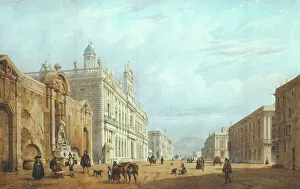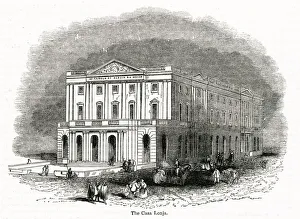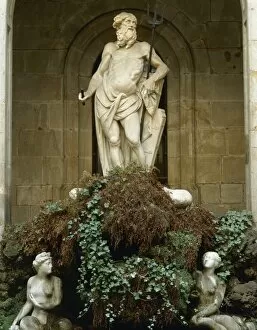Llotja Collection
"Exploring the Llotja: Barcelona's Historic Waterfront" Barcelona, Spain boasts a rich history that can be witnessed along its old waterfront
All Professionally Made to Order for Quick Shipping
"Exploring the Llotja: Barcelona's Historic Waterfront" Barcelona, Spain boasts a rich history that can be witnessed along its old waterfront, where the Casa Lonja or Stock Exchange stands proudly. Built in 1883, this architectural gem known as the House of La Llotja showcases intricate details and stunning sculptures that depict various aspects of Spanish culture. One such sculpture is "The Industry, " an allegorical masterpiece representing Barcelona's industrial prowess. As you stroll through the area, you'll also come across statues like "Llotja representing Asia" and "Llotja representing Africa, " which pay homage to the city's global connections. Not far from these remarkable artworks stands a statue of Neptune by Nicolau Trave, dating back to the 18th century. This majestic figure adds a touch of grandeur to the scene and serves as a reminder of Barcelona's maritime heritage. As you delve deeper into this historic district, you'll encounter more allegorical sculptures symbolizing both commerce and industry. These captivating works tell stories of prosperity and trade that have shaped Barcelona throughout its existence. But it isn't just Barcelona that has embraced llotjas; Valencia also boasts its own impressive structure called Llotja de la Seda (Silk Exchange). This UNESCO World Heritage Site showcases Valencia's historical importance as a hub for silk trading during medieval times. Whether in Barcelona or Valencia, exploring these llotjas offers an opportunity to immerse yourself in Spain's vibrant past while marveling at magnificent architecture and artistry. So take a step back in time and let these enchanting landmarks transport you to an era filled with bustling markets, thriving industries, and cultural exchange.














